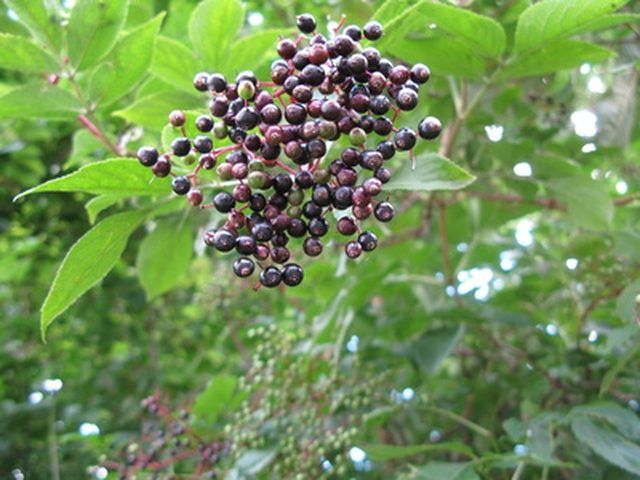Bulbs
Flower Basics
Flower Beds & Specialty Gardens
Flower Garden
Garden Furniture
Garden Gnomes
Garden Seeds
Garden Sheds
Garden Statues
Garden Tools & Supplies
Gardening Basics
Green & Organic
Groundcovers & Vines
Growing Annuals
Growing Basil
Growing Beans
Growing Berries
Growing Blueberries
Growing Cactus
Growing Corn
Growing Cotton
Growing Edibles
Growing Flowers
Growing Garlic
Growing Grapes
Growing Grass
Growing Herbs
Growing Jasmine
Growing Mint
Growing Mushrooms
Orchids
Growing Peanuts
Growing Perennials
Growing Plants
Growing Rosemary
Growing Roses
Growing Strawberries
Growing Sunflowers
Growing Thyme
Growing Tomatoes
Growing Tulips
Growing Vegetables
Herb Basics
Herb Garden
Indoor Growing
Landscaping Basics
Landscaping Patios
Landscaping Plants
Landscaping Shrubs
Landscaping Trees
Landscaping Walks & Pathways
Lawn Basics
Lawn Maintenance
Lawn Mowers
Lawn Ornaments
Lawn Planting
Lawn Tools
Outdoor Growing
Overall Landscape Planning
Pests, Weeds & Problems
Plant Basics
Rock Garden
Rose Garden
Shrubs
Soil
Specialty Gardens
Trees
Vegetable Garden
Yard Maintenance
Elderberry Trees
Elderberry Trees. Renowned as small woodland trees with whitish flowers in spring and summer, elderberry trees (Sambucus spp.) gain most notice when their purple, red or black berries ripen in late summer. Tolerant of moist soils, they add attractive foliage texture to property lines and gardens as well as provide fruit to feed songbirds and for...

Renowned as small woodland trees with whitish flowers in spring and summer, elderberry trees (Sambucus spp.) gain most notice when their purple, red or black berries ripen in late summer. Tolerant of moist soils, they add attractive foliage texture to property lines and gardens as well as provide fruit to feed songbirds and for humans to cook and use in pies and preserves.
Types
Three species in particular grow in temperate climate gardens around the world. Common elderberry of American elder (Sambucus canadensis), black elder or European elderberry (Sambucus nigra) and the European red elder (Sambucus racemosa).
Location
Common elderberry grows across eastern North America, from Canada's Nova Scotia to Florida, and west up to Minnesota and Texas. The black elder also grows across an expansive native range: southern and central Europe to southwestern Asia and in extreme northern Africa around the Mediterranean Sea. European red elder is found from central and northeastern Europe into western Siberia and today grows across much of northwestern North America, where it is an introduced species.
Identification
The common elderberry grows to 12 feet tall and wide with compound, light-green leaves comprising nine or more tapered, oval leaflets with teethed edges. In midsummer, branch tips bear many flat, wide clusters of sweetly fragrant, white flowers that develop into small (1/4 inch in diameter), purplish-black fruits.
Black elder grows taller, 20 to 30 feet in height and spread, and it displays medium green leaves comprising five leaflets with teethed margins. In early summer the branch tips carry flat, wide clusters of musk-scented white flowers that later become glossy-black fruits that are 3/8 inch in diameter.
European red elder, or red elderberry, grows 10 feet tall and wide, with dark-green leaves, each made of five oval leaflets with teethed edges. Cone-shaped clusters of creamy-yellow flowers occur in mid-spring, followed by 1/8-inch, glossy-red fruits.
General Culture
Grow all species of elderberry trees in a fertile, non-alkaline soil that contains large amounts of organic matter. The soil moisture should remain consistent but the tree also needs ample drainage so roots do not remain submerged in soggy, flooded soils. These small trees tolerate full sun to partial shade exposures, anywhere from four hours to entire-day sunlight. In drier soils or hotter climates, more shade keeps the foliage looking most attractive. Each species varies in survivability to winter cold: the common elderberry grows well in USDA hardiness zones 4 though 9, the black elder grows best in zones 6 through 8, and the European red elder grows in zones 3 through 7.
Uses
All three species of elderberries make excellent components to a mixed shrub border or woodland-edge planting. To attract songbirds, plant elderberries in clustered groupings in a "wild" garden or unmanicured landscape. Varieties that bear more ornately shaped or colored foliage grow nicely as stand-alone specimens in a garden or building foundation bed.
Hazards
Some people develop a skin rash when touching the foliage of elderberries. All parts of the plants contain cyanogenic glycoside and alkaloid toxins, including the unripe fruits. Although not fatal, consumption leads to nausea, vomiting and diarrhea. Extreme cases involve falling into a coma.
Pests/Diseases
Elderberries, depending on their growing conditions, remain susceptible to insect pests, fungal diseases like powdery mildew, leaf spot, rust, canker as well as many viral diseases.